![]()
![]()
![]()
Use LEFT and RIGHT arrow keys to navigate between flashcards;
Use UP and DOWN arrow keys to flip the card;
H to show hint;
A reads text to speech;
77 Cards in this Set
- Front
- Back
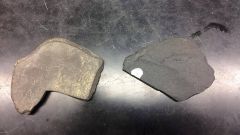
|
Type: Metamorphic Name: Slate Texture: Slaty cleavage Foliated: Yes Other: Relict bedding Position: Forearc Basin - Sediment carried off shore become concentrated here. Land derived character of the sediments is evident in the nature of the fossil compartments preserved in the shale (e.g. Light weight plant debris swept out to sea by floods) |
|
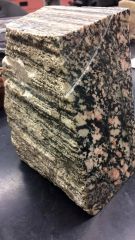
|
Type: Metamorphic Foliated: Yes Name: Granulite Texture: Gneissic foliation Mineralogy: feldspar, plagioclase, quartz Position: Volcanic arc |
|
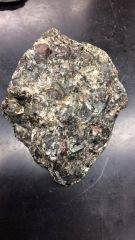
|
Type: Metamorphic Foliated: Yes Name: Schist Minerals: Muscovite, biotite, staurolite, andalusite, chlorite, quartz Texture: Schistose foliation Other: Garnet porphyroblasts Position: Frontal arc? |
|
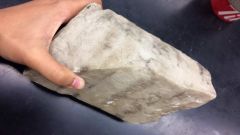
|
Type: Metamorphic Foliated: No Name: Quartzite Texture: Granoblastic Minerals: Calculate, Dolomite, Quartz Other: Relict bedding, interlocking quartz grains |
|
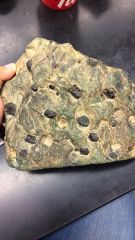
|
Type: Metamorphic Foliated: Yes Texture: Schistose Minerals: Staurolite, Chlorite Other: Porphyroblasts of staurolite Name: Schist |
|
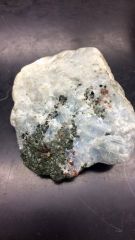
|
Type: Metamorphic Foliated: No Texture: Granoblastic Minerals: Calcite, Garnet, Diopside Other: minerals clumped by composition Name: Skarn (York River Specimen) |
|
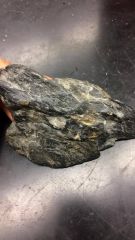
|
Type: Metamorphic Foliated: Yes Texture: Phyllitic Other: Silky/satin sheen, fine grained Name: Phyllite |
|
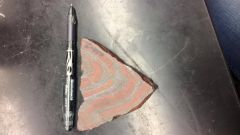
|
Type: Metamorphic Foliated: No Minerals: Jasper, hematite, magnetite Others: Relict bedding, folding Name: MetaBIF |
|
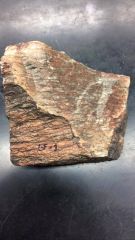
|
Type: Metamorphic Foliated: Yes Texture: Mylonitic Minerals: quartz Others: Flattened porphyroclasts in fine grained groundmass Name: Mylonite |
|
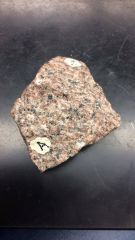
|
Name: Granulite Age period: Permian |
|
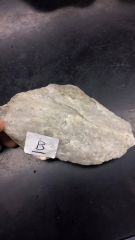
|
Name: Quartzite |
|
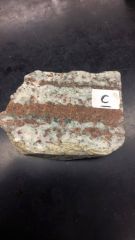
|
Name: Skarn |
|

|
Name: Hornfels |
|
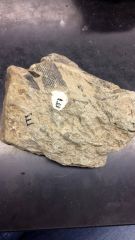
|
Name: Quartz Arenite Age period: Carboniferous/Permian |
|
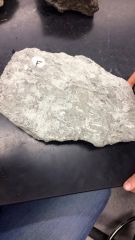
|
Name: Fossiliferous Limestone Age period: Devonian/ordovician |
|
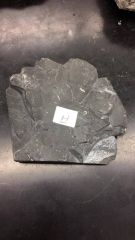
|
Name: Fossiliferous Shale Age period: Cambrian |
|
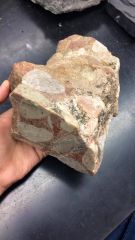
|
Name: Conglomerate |
|

|
Name: Gneiss Age period: Neoarchean Eon |
|
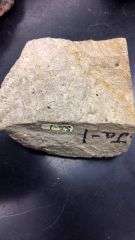
|
Name: Welded Tuff Age period: Jurassic Period |
|
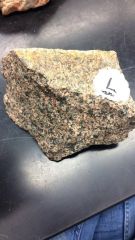
|
Name: Syenite |
|
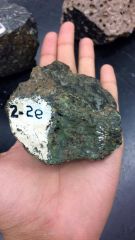
|
Name: Serpentined Dunite Description: Waxy lustre, lack of texture = alteration of half minerals, serpentine, pyroxene Position: Upper mantle Periodtites |
|
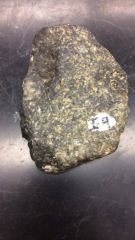
|
Name: Gabbro Position: Upper magma chamber Description: mafic, phaneritic, serpentine, course grained, pyroxene, plagioclase, feldspar, intrusive - slow cooling |
|

|
Name: Serpentined Dunite Position: Lower magma chamber Description: serpentine, chromite, phaneritic, mafic, chromite sinks, serpentine rises |
|

|
Name: Diabase Position: Sheeted dykes Description: porphyritic |
|
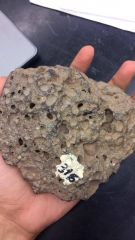
|
Name: Amygdaloidal Basalt Position: pillow lavas Description: vesicles, high volatile content, aphanetic |
|
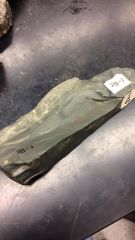
|
Name: Mudstone Position: sediment cover Description: non-fissile, massive, low energy environment, soft sediment deformation = uneven surface |
|
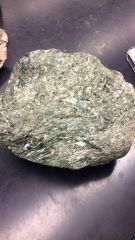
|
Name: Amphibolitized Perioditite position: Upper mantle periodotite Description: cooled slowly at depth |
|
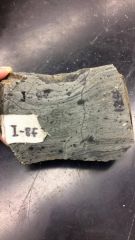
|
Name: Chert Position: sediment cover Description: precipitation of silica gel or deposition of silicious ooze, chert identified by hardness and fine grained soft sediment deformation present, biochemical |
|
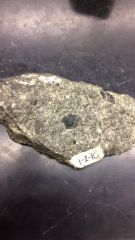
|
Name: Conglomerate Position: Frontal arc/mountain lowlands Why? Repeated rounding and sorting of class by long stream transportation. Physical weathering produces rock fragments which are transported down hill by gravity, with assistance from water. |
|
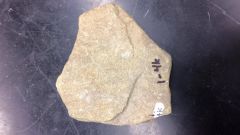
|
Name: Quartz Arenite Position: forearc basin Why? Travels a far distance (fine grained) compared to breccia and conglomerate |
|
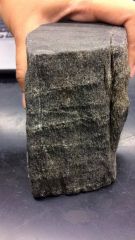
|
Name: Amphibolite Postion: Volcanic arc Why? relatively uniform pressure and heat, but higher pressure and heat than green schist, found under the volcanic arc. Regional metamorphic facies. |
|
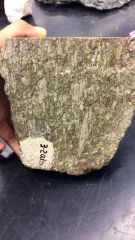
|
Name: Ignimbrite Postion: Volcanic arc Why? formed from pyroclastic flow that remelted and weld. Lava flows and true ignimbrite are found close to the original volcano |
|
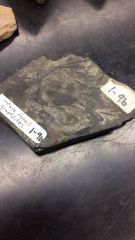
|
Name: Shale Position: forearm basin Why? Sediments carried offshore become concentrated here. Land derived character of the sediment is evident in the nature of fossil components preserved in the shale - light weight plant debris swept out to sea by floods. |
|
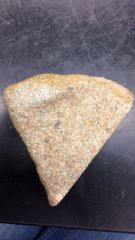
|
Name: Turbidites Position: Trench Why? Deposited by turbidity currents. high sediment production here from the rapid erosion of high lands. narrow widths of continental shelf areas landward and steep stop of seafloor leading to trench |
|
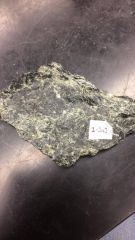
|
Name: Chlorite Schist Position: forearc basin why? foliated and chlorite = chlorite schist at green schist facies |
|
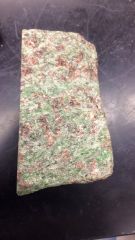
|
Name: Eclogite Position: Deep subduction zone Why? high temperature and pressure is found in the deep subduction zone |
|

|
Name: Breccia/Conglomerate Position: Frontal arc/mountain lowland Why? collision = upthrust of rock = numerous high mountains. Physical weathering = rock fragments. Transported downstream by gravity and water. |
|
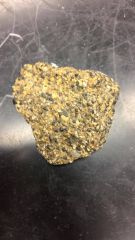
|
Name: Conglomerate |
|
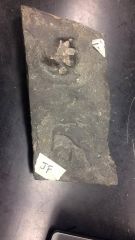
|
Name: Shale Position: river channel and floodplain Why? footprint = periods of exposure. Ripple cross bedding form when flood water escape a river channel and velocity decreases so fine sediment settles out to from thin layers. |
|
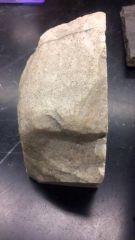
|
Name: Quartz Arenite Position: Beaches, barrier island dunes. Why? well sorted quartz sandstone and well rounded grains imply repeated processing of the same sediment grains by waves again and again |
|
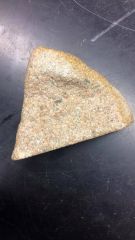
|
Name: Granular Sandstone (3-7b) Position: Alluvial fan why? Variable composition --> close to source, K-feldspar --> arid conditions |
|

|
Name: Oolitic Limestone Position: beaches, barriers islands, dunes Why? ooids tend to from well sorted deposits of oolitic limestone in agitated tropical beach or shallow nearshore marine shelf environment |
|
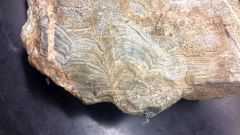
|
Name: Stromatolitic limestone Position: tidal flats Why? highly saline conditions that develop on mud flats in air tropical regions can promote the development of stromatolites |
|
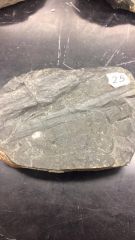
|
Name: Carbonaceous Shale Positions: Deltas Why? Mud = calm water, Plant fossils = close to land |
|
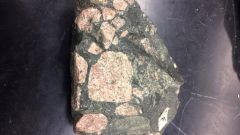
|
Name: Diamictite Position: upland and glacial environments Why? sediment is very poorly sorted and is massive with very large clasts floating in a mud matrix. Scratches on large clasts imply a glacial origin. |
|
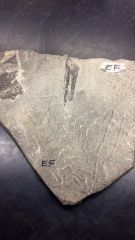
|
Name: Microbial mats - limestone Position: Lagoon Why? biochemical so it needs to have a low energy quiet shallow body of water where it experiences high rates of evaporation and dries out, producing hyper saline and oxygen-deficient conditions |
|
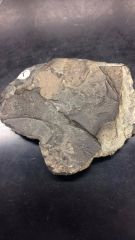
|
Name: Shale Position: deep marine environment Why? fine grained = calm water, shells deposited during storms, impression of marine life |
|
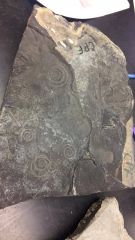
|
Name: Shale Position: deep sea floor Why? impression of marine life, fine grained = calm water |
|
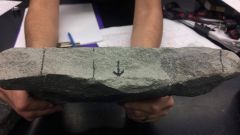
|
Name: Quartz Arenite Position: tidal flats Why? mud cracks indicate alternating wet and dry periods in a low energy environment, well sorted sandstones = far from source |
|
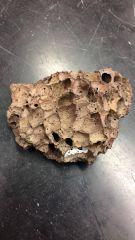
|
Name: Scoria |
|

|
Name: Obsidian |
|

|
Name: Pumice |
|
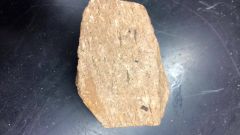
|
Name: Lapilli Tuff |
|
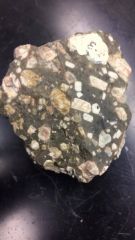
|
Name: Porphyry |
|
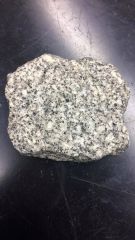
|
Name: Quartz Diorite |
|
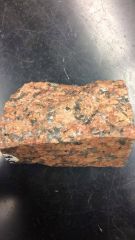
|
Name: Granite |
|
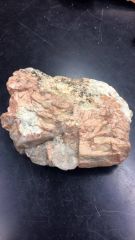
|
Name: Pegmatite |
|
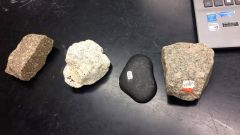
|
Names: (From right to left): I-1137/15, I-9d, DT, I-122 |
|
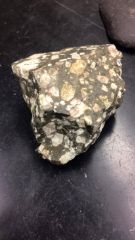
|
Name: I-3 |
|
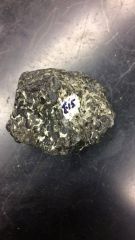
|
Name: I-15 |
|

|
Name: Quartz Arenite |
|
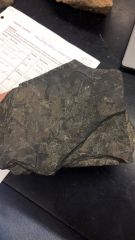
|
Name: Shale |
|
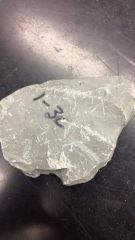
|
Name: Claystone |
|
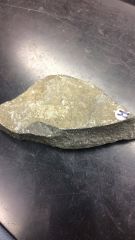
|
Name: Greywake |
|
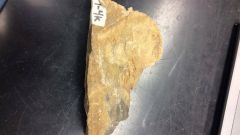
|
Name: Quartz Arenite |
|
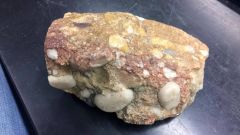
|
Name: Conglomerate |
|
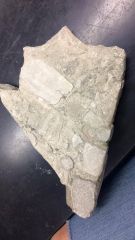
|
Name: Breccia |
|
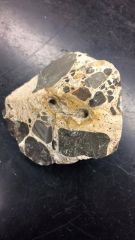
|
Name: Conglomerate |
|
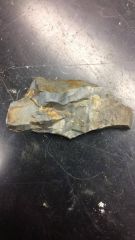
|
Name: Chert |
|
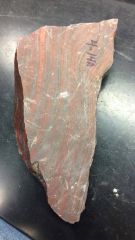
|
Name: BIF |
|
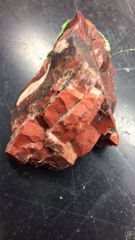
|
Name: Chert |
|
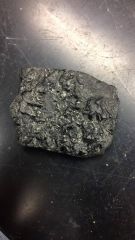
|
Name: Coal |
|
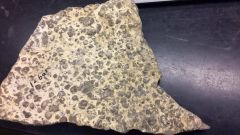
|
Name: Fossiliferous Limestone |
|

|
Name: Quartz Arenite |
|
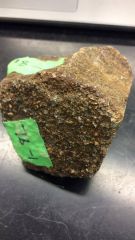
|
Name: Lithos Arenite |
|
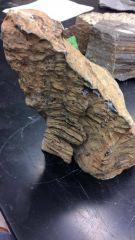
|
Name: Stromatolitic Limestone |
|
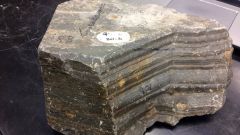
|
Name: Mudstone |

